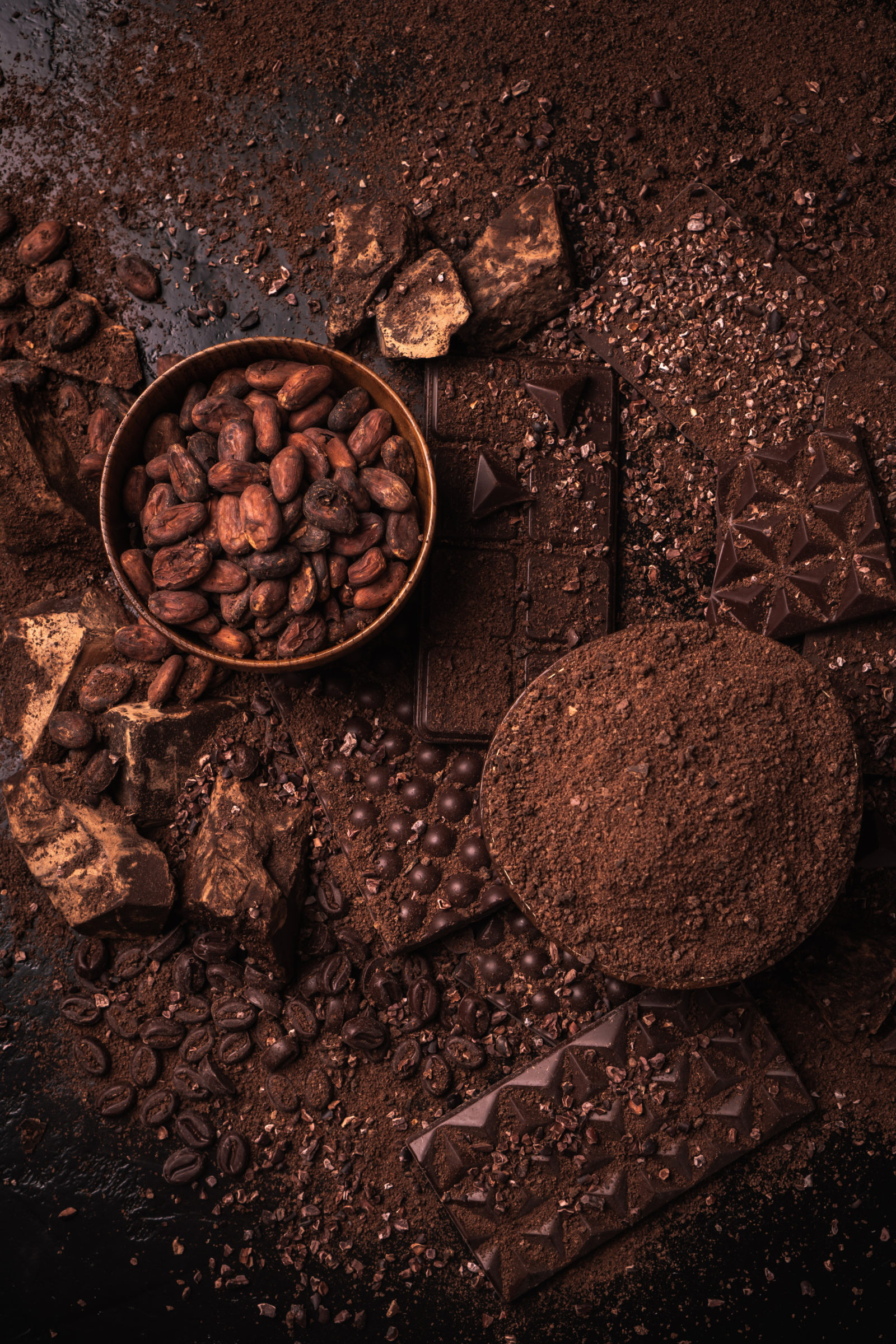
Chocolate delights our palates and bodies with unsuspected benefits: it promises natural tasteful pleasure, balance and health.
A WHOLE WORLD CONQUERED BY ITS PROPERTIES – Spain discovered chocolate during the Aztec Empire conquest in the 16th century. Spanish colonists adapted the Aztecs’ bitter preparation with milder spices, cloves, cinnamon, almonds, vanilla instead of chili or anise and added sweetness with cane sugar. Chocolate then started to showed up in royal courts. Later, with the industrial revolution, it became more popular and several chocolate factories opened. Today, chocolate is the 3rd largest product traded in the world after sugar and coffee. It is discussed with great passion, both in terms of health and pleasure. Whether solid or liquid, or even to chew, suck or drink… what happens when this sweet gem embraces us? It is indeed a divine blend which has not yet revealed all its mysteries.
RECONSTITUTING PROPERTIES ~ Until 1866, chocolate was considered a drug in pharmacopoeia and prescribed by apothecaries for its medical properties. It contains more than 300 active substances, magnesium, iron, antioxidants, neurotransmitters such as euphoric anandamide, psychostimulating phenylethylamine and theobromine! Napoleon would eat chocolate on the battlefields and it is an essential part of American soldiers’ nutrition.

A FRIEND FOR YOUR HEART AND BLOOD VESSELS ~ This fabulous blend of cocoa paste, cocoa butter and sugar is, depending on the recipe, improved with milk, flavors, alcohol or fruit. If we were to find (some kind of) flaw, it would be that out of 3 pieces of dark chocolate, one piece is equivalent to pure fat. However, this fat is mostly made up of oleic acid, the same fatty acid contained in olive oil. It levels down blood cholesterol and levels up good cholesterol which protects the cardiovascular system.
TONIC AND APHRODISIAC? “Happy chocolate, which after crossing the world, through the smile of women dies in a tasty, melting kiss of their mouths.» said Anthelme Brillat-Savarin with delight. Tainted with a sulphurous reputation, chocolate is in fact associated with the idea of pleasure, well-being, the sin of gluttony, even lust. When King Louis XV scolded his favorite Mrs. de Pompadour for being too cold, in order to “heat up her blood”, she would have vanilla chocolate served for lunch. Ecclesiastics of the sixteenth century unanimously condemned “this food leading to the sin of the flesh.”

FROM CACAO PODS TO CHOCOLATE ~ The cocoa fruit takes its name from the Spanish word “cabeza”, meaning “head”, because conquistadors found some analogy with the head shape of Amerindians, as it was deformed from birth by skull massaging. Cacao pods indeed look like small rugby balls. They contain beans which, to be turned into cocoa paste, go through a complex processing chain: fermentation, decortication, roasting, grinding, refining… This process gives each kind of chocolate its own personality, like grape varieties. Chocolate is precious: it must be tasted quickly and preserved from too much light, heat and cold. There are so many recipes: from simple bars, consumed voraciously, to fine chocolate boxes; pies and fondant with mousse, ice cream and entremet… During this festive holiday season, take the time and pleasure to enjoy it in its many forms!
Author : Dr. Marie Antoinette Séjean
CONTACT
The Association « Nutricréole », presided by Dr. Marie Antoinette Séjean, nutritionist, brings balance to your plate and your life.
Email : drsejean@gmail.com
https://www.facebook.com/nutricreole

